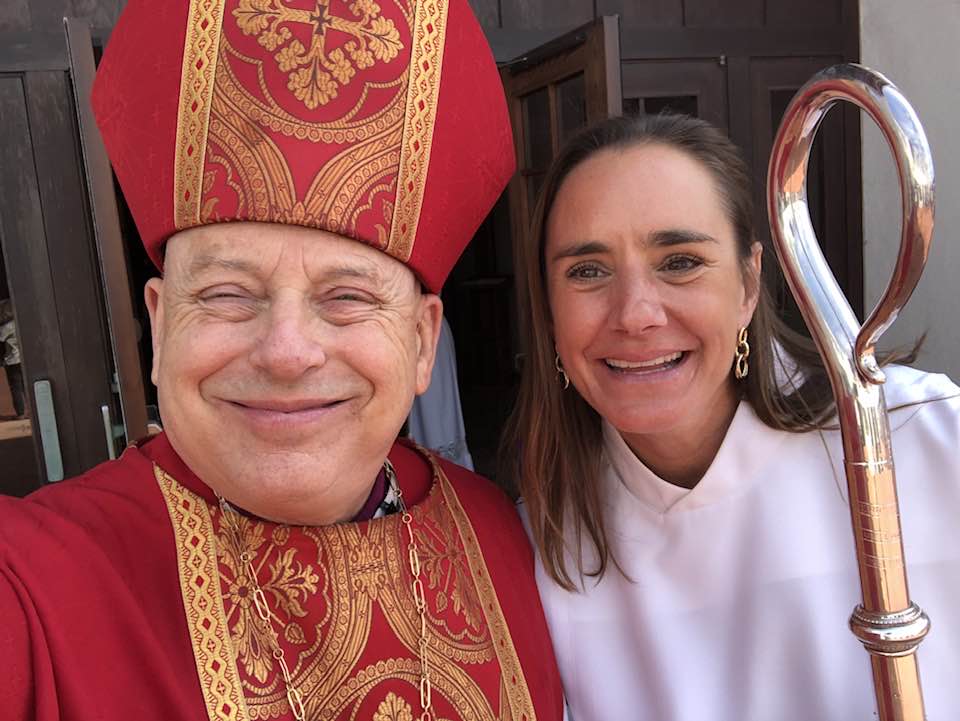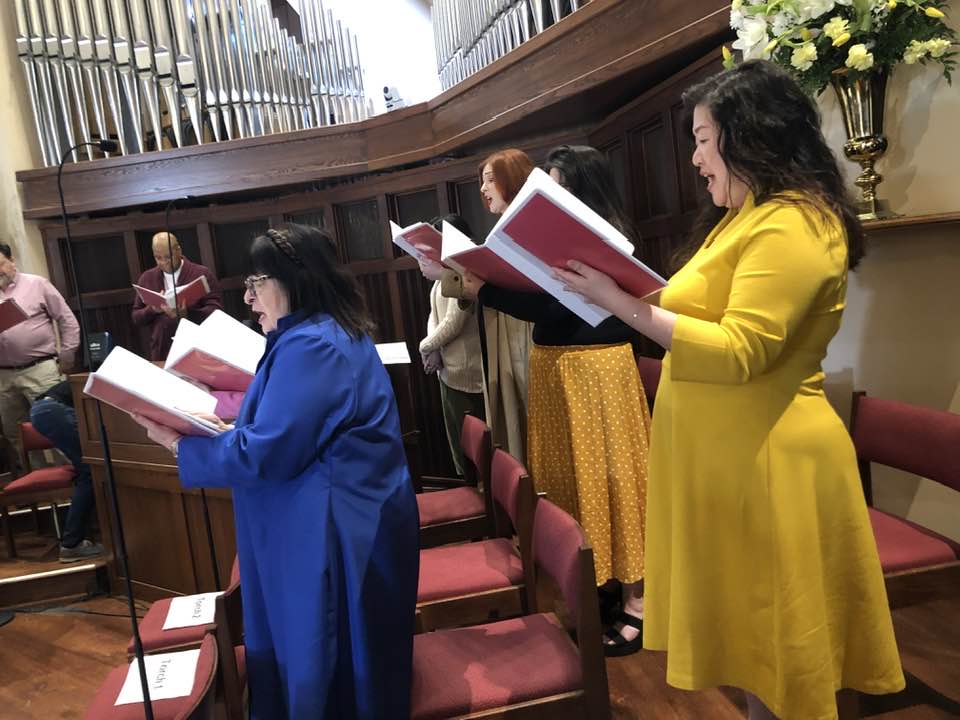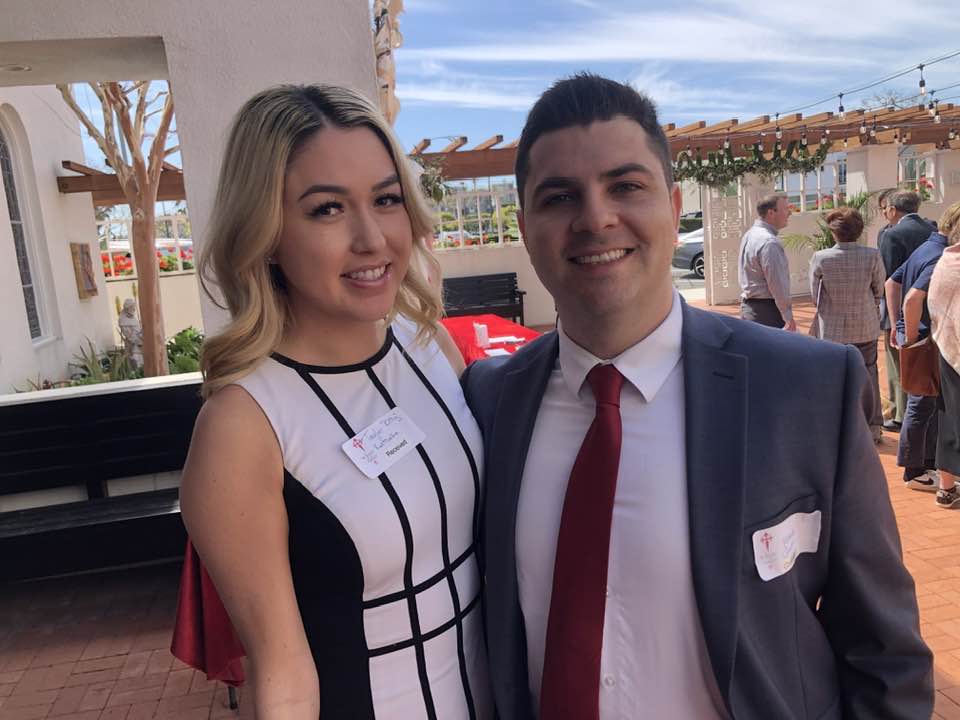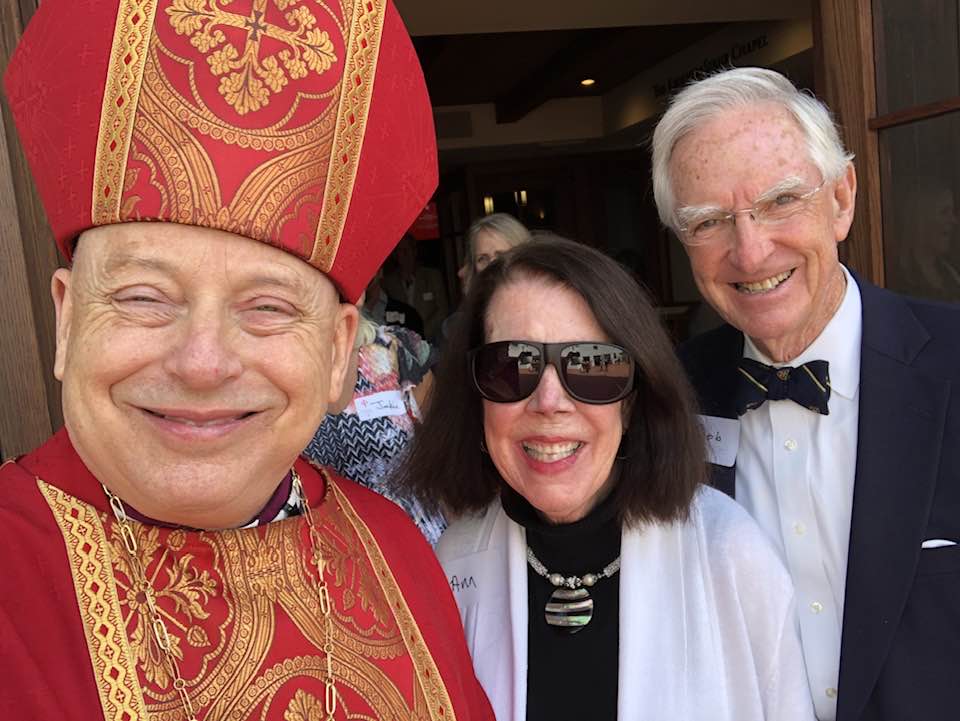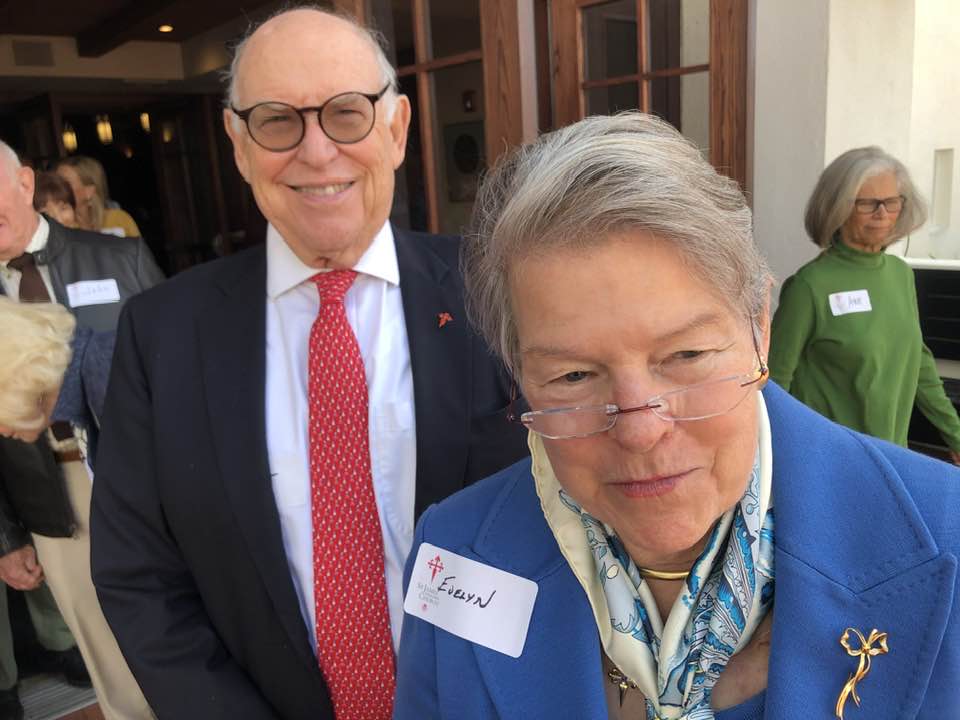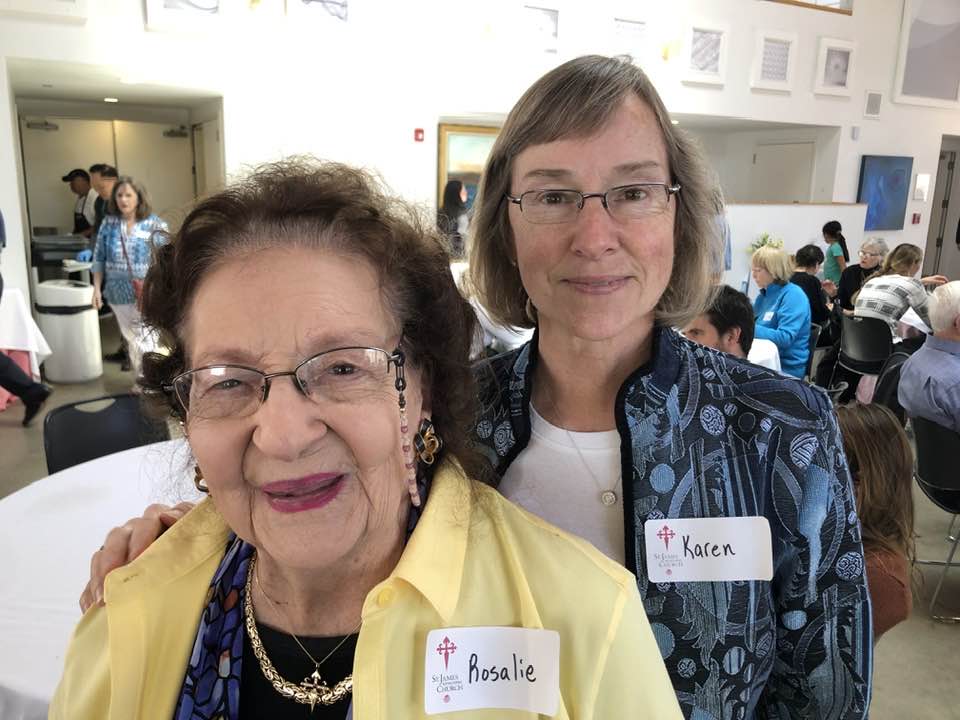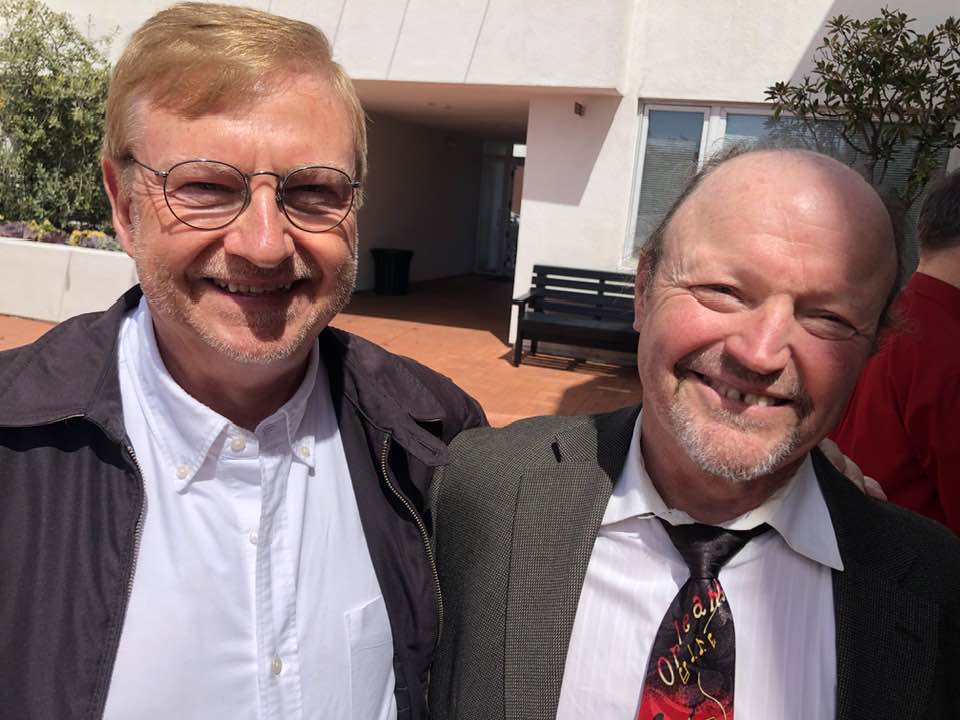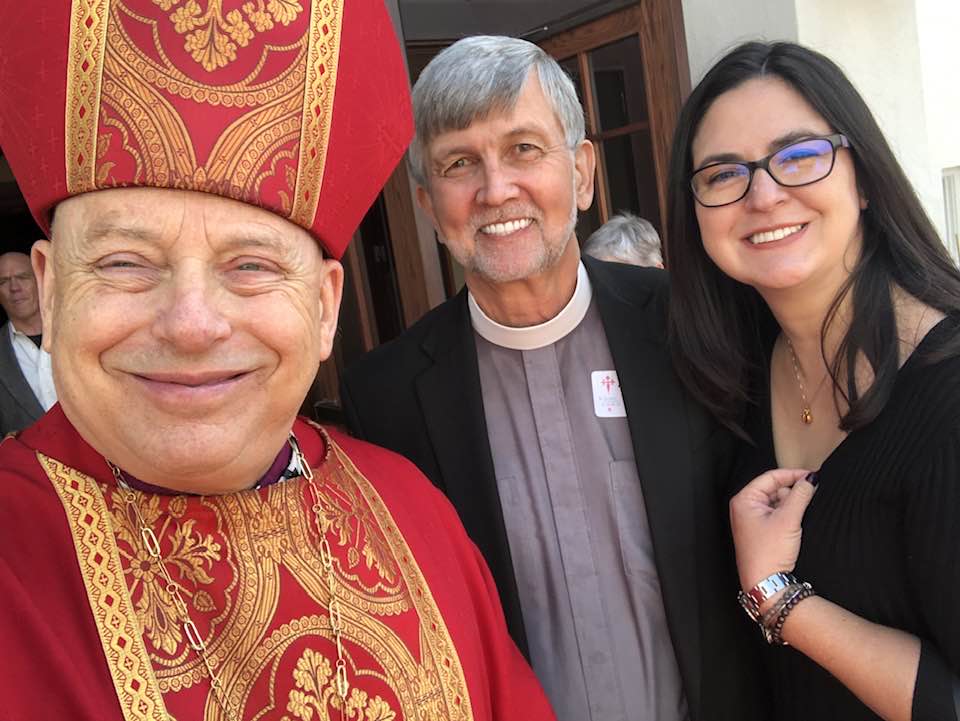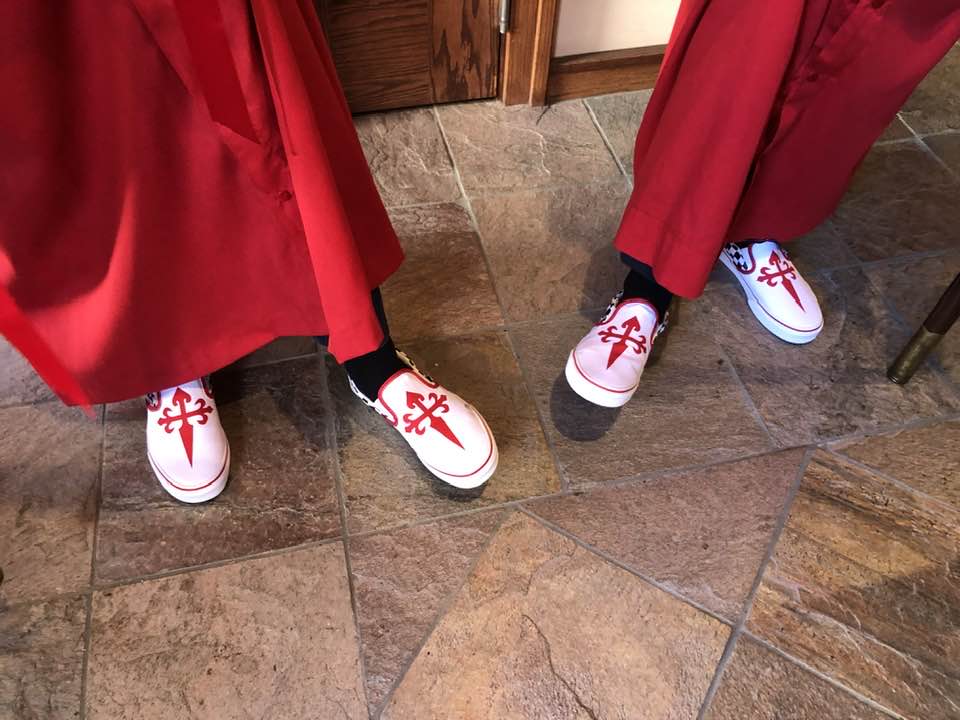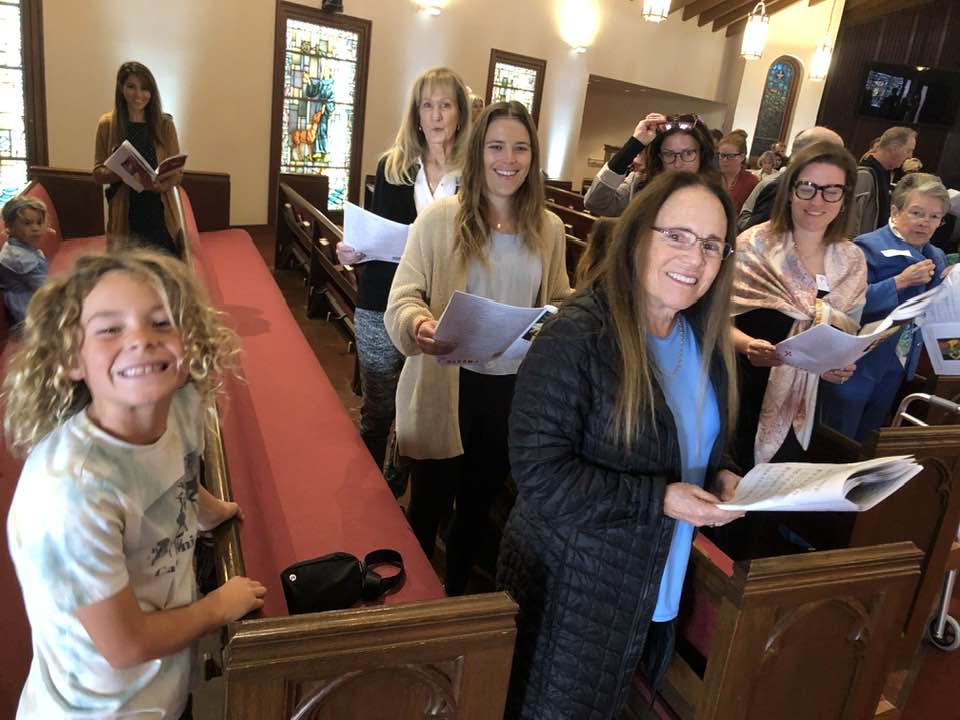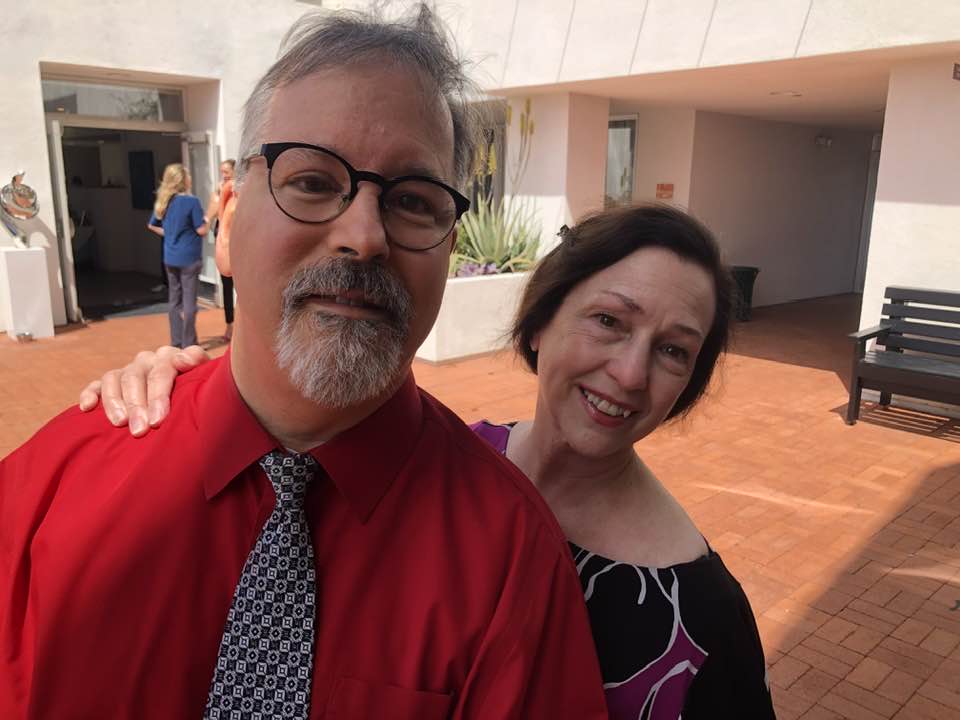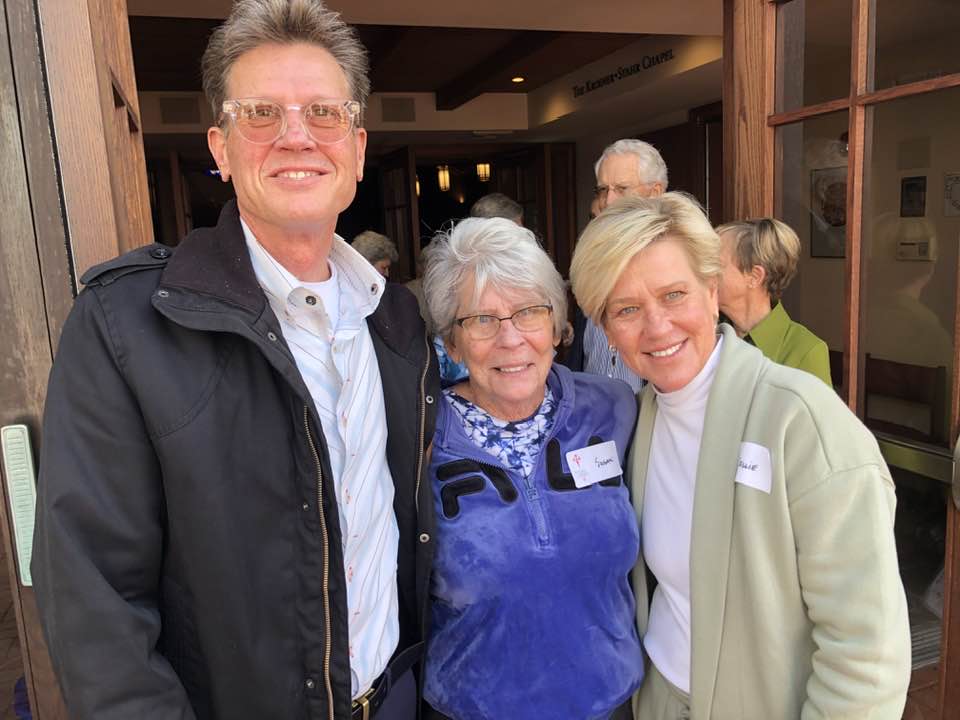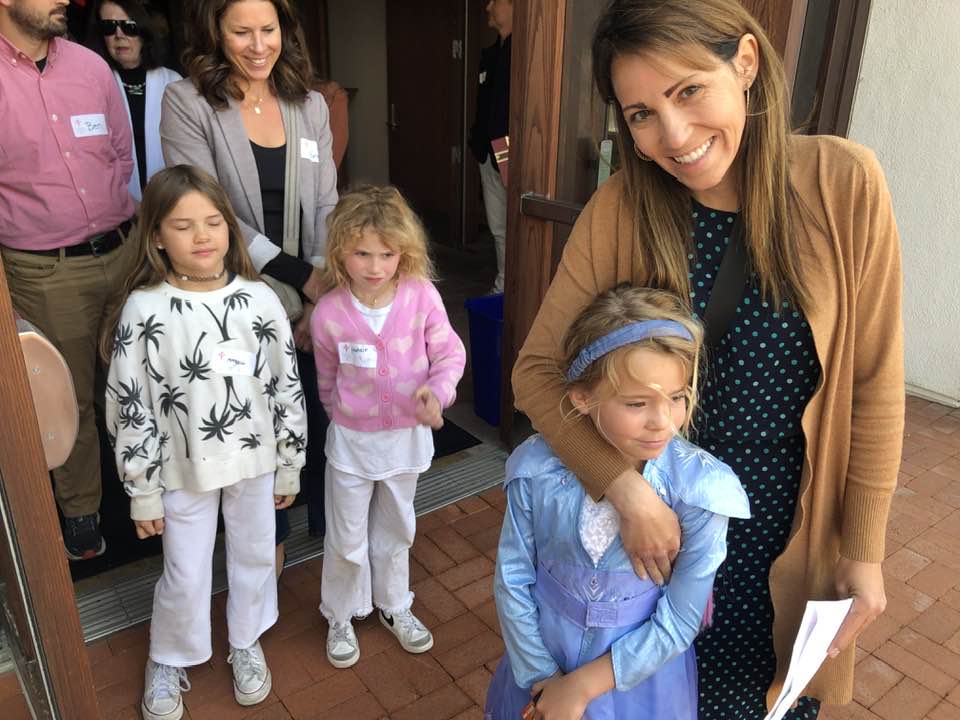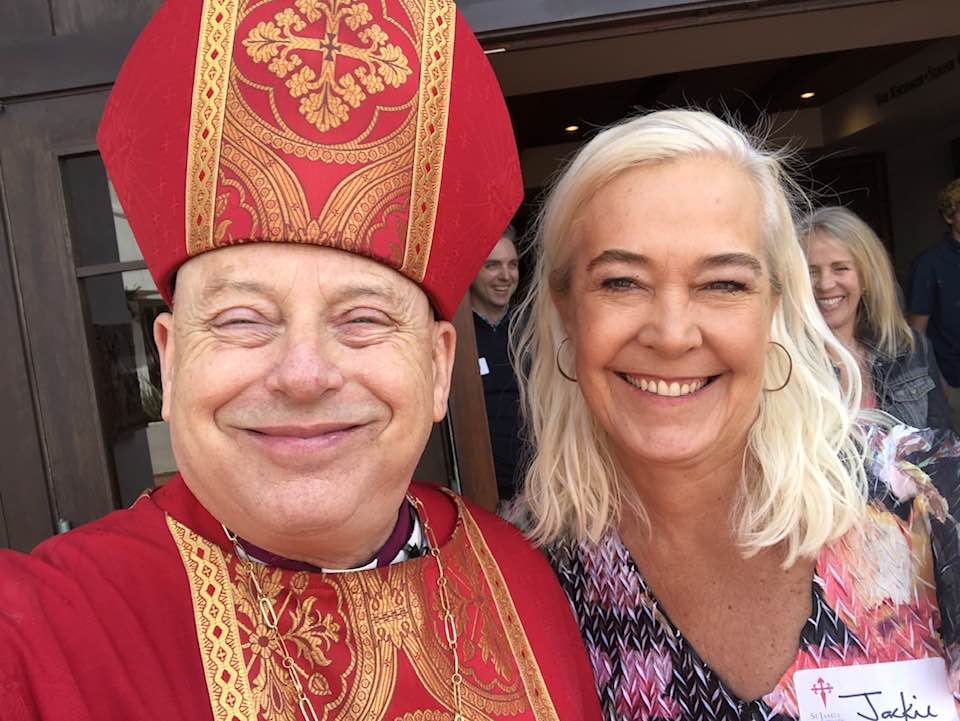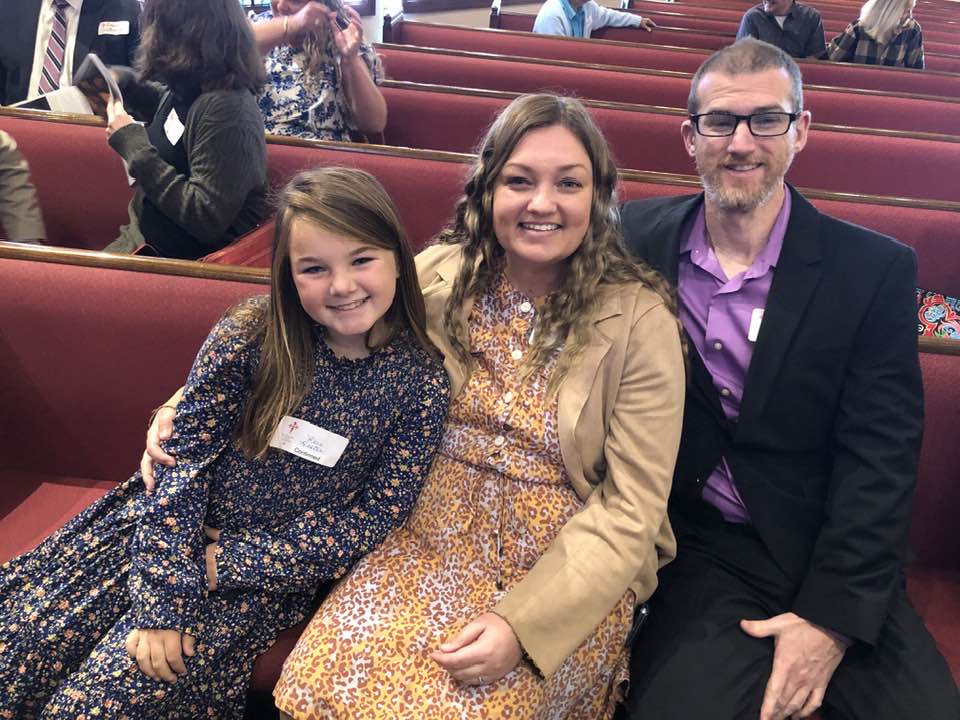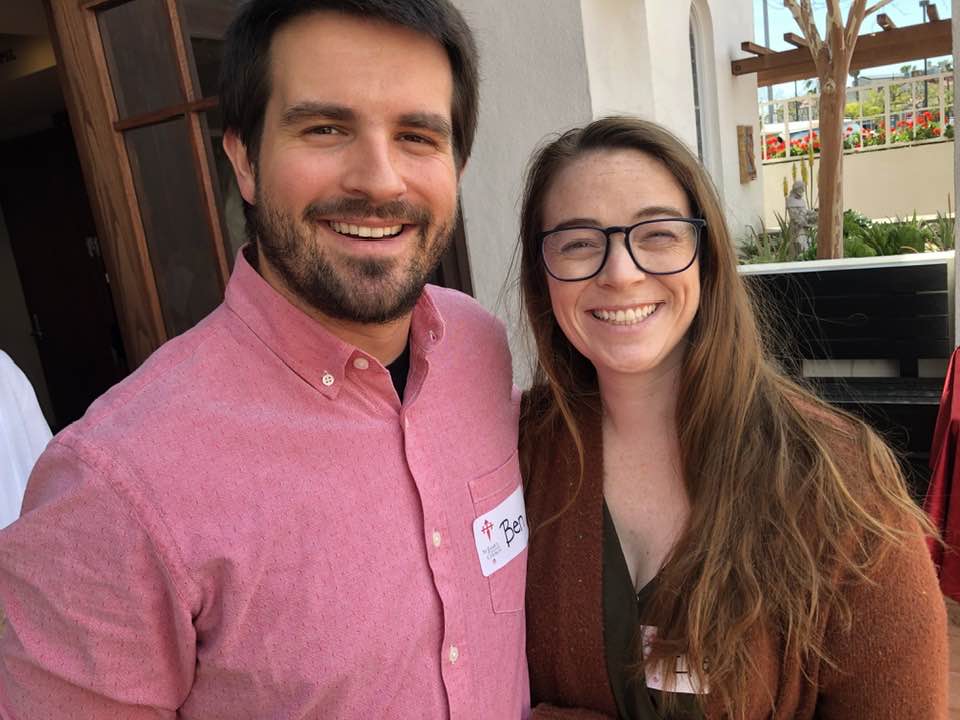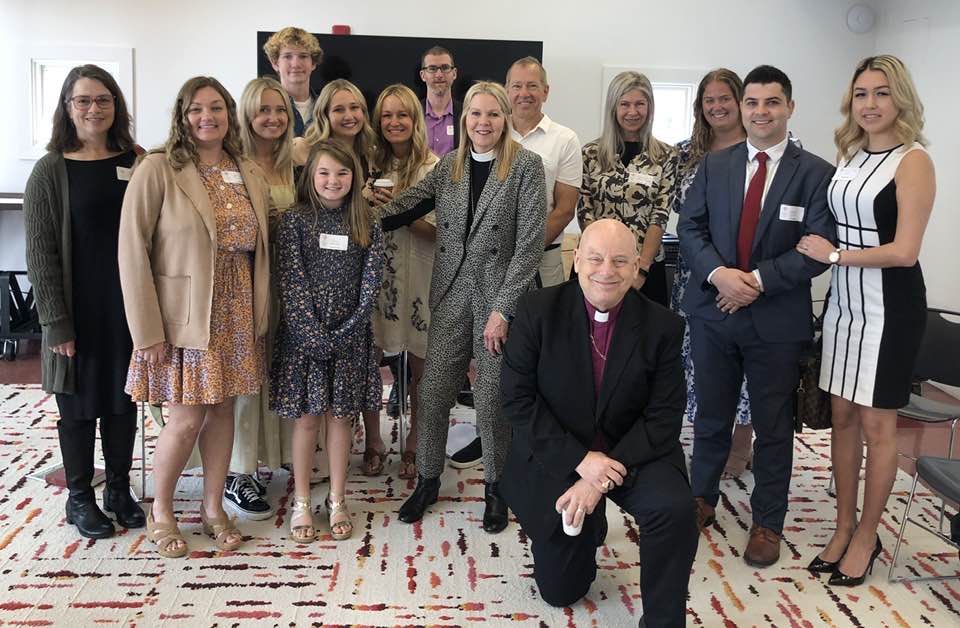
The second Sunday after Easter is sometimes called low Sunday — not because attendance is necessarily low but because, it was long ago thought, people needed a break from the exhilaration of Easter Day. But these days, we need as much Easter as we can get. And indeed the festival spirit was still set at 11 on Sunday when I visited St. James Episcopal Church Newport Beach to celebrate, preach, and preside as the Holy Spirit did her transformative work.
Sixteen came to be confirmed or received or to reaffirm their baptismal vows. Low Sunday always comes with the story of the initial skepticism about the Resurrection exhibited by Thomas the Apostle, thrillingly enacted in an anthem featuring the St. James Choir and soloists James Callon and Stefan Miller, under the direction of organist and director of music Mark T. Purcell. My buddy from St John Chrysostom Church days, Buddy Lang, was on trumpet. Meg Cooper, a former senior warden, served graciously as my chaplain. Her spouse, Jackie Freeman, was chalice bearer as I served the host. It was a joy to see the Rev. Richard Rubin and the Rev. Susan Purnell among several priests who assist at St. James. Susan had helped prepare the confirmation candidates.
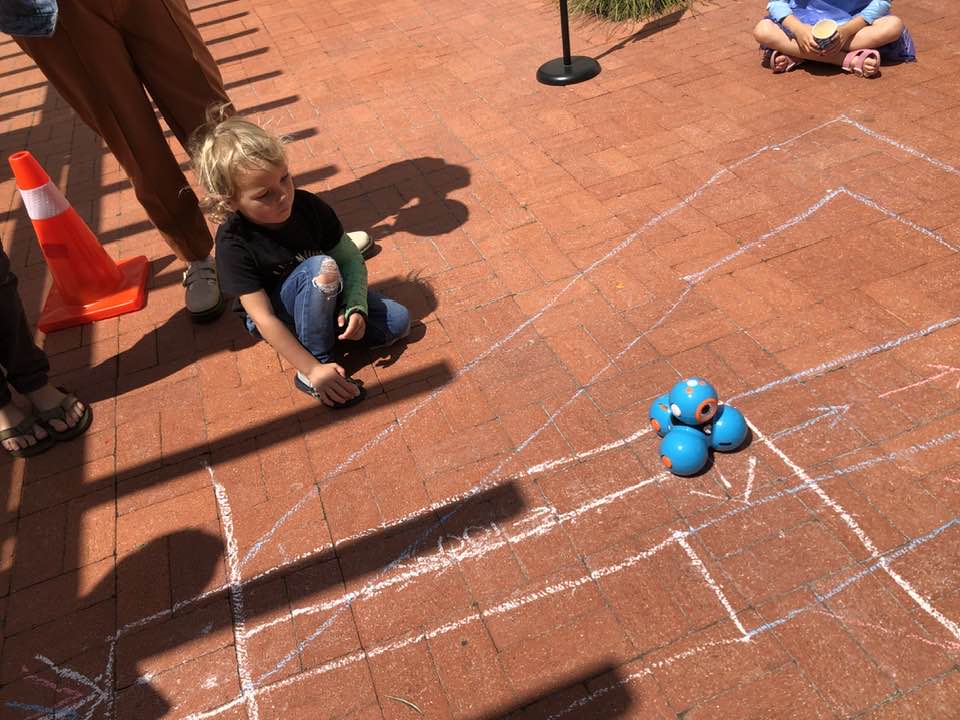 In modern times we often reckon Thomas’ doubting as a virtue. It’s natural to want proof, and it’s vital to respect science. Long fascinated by the power and influence of technology in society and the church, the innovative St. James’ rector, the Rev. Canon Cindy Voorhees, has programs coming up on whether AI amounts to a new creation and what we really know and believe about hell. We had a robot on the altar, and after church, Steve from the parish tech team taught the kids how to program it.
In modern times we often reckon Thomas’ doubting as a virtue. It’s natural to want proof, and it’s vital to respect science. Long fascinated by the power and influence of technology in society and the church, the innovative St. James’ rector, the Rev. Canon Cindy Voorhees, has programs coming up on whether AI amounts to a new creation and what we really know and believe about hell. We had a robot on the altar, and after church, Steve from the parish tech team taught the kids how to program it.
As the cosmos would have it, today a science vs. faith riddle unfolds before our averted eyes. Billions of years ago, beginning with impossibly vast masses of gas and dust squeezed together by the sun’s gravity, leading to catastrophic planetary collisions — out of all that, we have a moon that’s 400 times smaller than the sun and 400 times closer to us than the sun. As a result, when one passes in front of the other, they sync perfectly, and we see a corona of heavenly light that makes poets weep and should make the rest of us pay a little closer attention to the preciousness of creation. God’s engineering or, as one authority called it, just a cosmic coincidence? Go ask Thomas. I think he’ll know.
